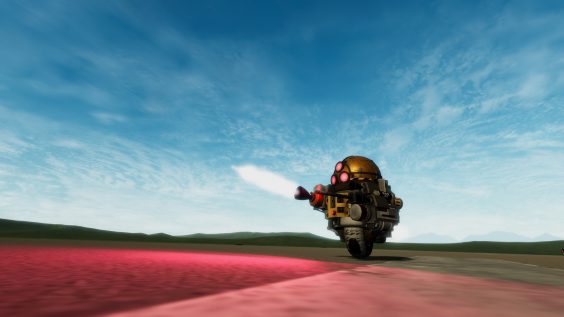
The intro
The principle rules for getting an article into space from Kerbin and keeping it there (which is called accomplishing a steady circle) are genuinely simple to clarify: Your specialty should conquer gravity and drag.
Gravity diminishes with the square of the distance as you move away from the focal point of Kerbin. Be that as it may, essentially acquiring elevation isn’t sufficient. You likewise need to acquire adequate level speed to, as a regarded creator once characterized flight, give yourself wholeheartedly to the ground and continue to miss. Gravity will consistently pull an art straight down toward the ground; however by voyaging sideways quick enough, the specialty constantly tries not to fall descending straight enough to hit the climate, considerably less the outside of Kerbin. This is called orbital speed and needs around 4000 m/s of Delta-V for Kerbin.
Drag diminishes dramatically until you clear the highest point of Kerbin’s air (which is at 69,078m). Generally, the mass of your vehicle is undeniably more significant than drag, yet a decent plan actually makes important commitment to your rocket’s effectiveness. A rocket is just the endeavor to drive mass through the air into the deep darkness. Air acts similar as a fluid, and as such your rocket should shove it to the aside consistently on its approach to circle. This is the reason genuine rockets and planes are smoothed out: They are molded in a way that makes it simple to part the air in front and lead it around the rocket. A wide, short “hotcake rocket” will encounter significantly more drag than a tall thin one, since air can just move far removed of the rocket at restricted rates too.
So the principles for planning rockets are basic: Make them light, make them thin, and give them a lot of force. Genuinely clear.
It is acceptable practice to initially develop your payload and just later form the rocket that should bring it into space (the last is likewise regularly alluded to as a “dispatch vehicle”). Afterward, this will make it simpler to all the more likely gauge what dispatch vehicle you’ll require for your missions.
Balance/Symmetry
On the base left bit of your screen, you can see a catch with a yellow speck in the center. On the off chance that you click on it, you will empower the evenness alternative. This implies that now, at whatever point you place a piece of your vehicle that isn’t in the center vertical pivot (hierarchical), it will be put evenly on different sides. This alternative is hugely useful when building dispatch vehicles, as this guarantees that you don’t inadvertently lose parts that would move your focal point of mass from the center of the rocket. Each balance must be consistently amended during the climb, as it makes your rocket “lean” into a particular heading. While this can be remedied during flight, the energy utilized for this revision isn’t accessible to push your rocket upwards ( = squandered energy).
There are two different ways to change the conduct of balance. You can change the evenness check with left-click, right-snap, X, and Shift-X; and you can change the balance mode with center snap or R. The evenness check is the quantity of duplicates of a helter-skelter part that will be set, and it tends to be set to 2, 3, 4, 6, or 8. Setting it to 1 turns evenness off. The evenness mode can be either “spiral” or “reflected”. In spiral mode, topsy turvy parts are put at an equivalent separation from the centerline and an equivalent separation from each other, with the goal that they are adjusted every which way; this is by and large useful for rockets. In reflected mode, the parts will be equidistant from the centerline when estimated side-to-side (i.e., the yaw course), however not really when estimated in the pitch heading (i.e., the two of them might be counterbalanced up or down, from the pilot’s perspective as they face the nose). The reflected mode must be utilized for two-tally balance, and since it can make an uneven mass it is more commonly valuable for spaceplanes than for rockets.
The starting point
SAS
This toggleable help framework remembered for all order modules (default: “T”) upholds revolution control (pitch, yaw, move) of a vessel. Manual control information will be hosed while SAS is dynamic and moderate the revolution rate to zero (“hosing mode”). This can be valuable in the event that you have extremely incredible turn wheels that would cause excessively solid of a force in any case or to “brake” revolution.
On the off chance that your vessel doesn’t turn, SAS changes to the “Locking” mode. It will presently attempt to hold the current direction (which isn’t to be mistaken for heading).
SAS utilizes similar methods for control accessible to you as the client (response wheels, RCS, control surfaces, motors, and so forth)
ROCKET CONSTRUCTION
When constructing your ship, don’t append fluid gas tanks straight above or under a SRB (Solid Rocket Booster) since they are incongruent. Fluid gas tanks require a fluid fuel motor joined under them. SRBs are themselves the motor.
(Reaction Control System) engines and RCS Fuel (Monopropellant) are for mooring two boats in space. Also, in vocation mode, you can eliminate the monoprop (RCS fuel) from the case/cockpit to set aside cash and weight. Afterward, as you assemble more intricate rockets, you can utilize RCS for more control while in space.
Utilizing balances to settle the rocket is a smart thought. What’s more, in the same way as other things in KSP, this thought depends on certifiable ideas. With regards to blades, consider the rocket a dart or bolt… balances ought to join just to the BOTTOM of your rocket.
A significant piece of rocket development is the organizing list. Indeed, even experienced KSP players at times neglect to check their organizing before dispatch. Arranging can be modified on the launchpad, anyway it is prescribed to make organizing changes inside the VAB (Vehicle Assembly Building). At that point click Save prior to going to the platform.
Most rockets can dispatch without the requirement for the red dispatch clips. On the off chance that you do utilize the dispatch braces, make certain to set them to the lower part of the arranging list. You need them to be delivered simultaneously the rocket lights at takeoff.
Profession Mode: When assembling your rocket, don’t put parachutes on the fluid sponsors or SRB’s of the dispatch stage. This will set aside cash and weight. Since the game considers any parts that are discarded/decoupled during a mission to be (garbage). You don’t get cash back for casted off/decoupled parts, regardless of whether you put chutes on them.
RCS
The response control framework is an uncommon framework that makes push by ousting packed gas. This gas is put away in a compacted structure called Monopropellant (regularly abbreviated to Monoprop or Mono) as it doesn’t need a blend of two charges like any remaining motors. The push produced by these engines is low, yet – dissimilar to in all actuality – they don’t matter power on close by different items (the fumes of ordinary strong or fluid engines can drive another article away), settling on them the best option for all sort of high-accuracy revolutions and interpretations in vacuum, where no critical obstruction (drag, gravity) must be survived. The low push additionally permits an extremely fine control (significantly more so in exact control mode, default “Capslock”), completely appropriate for docking moves. Another conceivable field of use is for ultralight test drive on low-gravity, no-environment planetoids or moons. A lightweight test with different RCS engines can be controlled viably. RCS has two significant potential gains: While it requires unique fuel to be conveyed along (which means additional mass), the real engines are lightweight and omnidirectional. Additionally, RCS engines don’t need to be straightforwardly associated with the monopropellant tank. Another potential gain is that fuel utilization is incredibly low. Indeed, even a little tank of 25 units of monopropellant can keep going for quite a long time of push. RCS isn’t dynamic of course. Like SAS, it very well may be flipped whenever (default: “R”). In the event that RCS and SAS are dynamic, RCS will be utilized for course rectifications. This can be significant in the event that you need to accelerate revolutions or interpretations, yet take care to not leave it dynamic for delayed timeframes, as SAS likes to do “small”- increases in RCS for constant revisions. On the off chance that you don’t need quick course adjustments or exact orbital amendments in space (concerning docking moves), you can basically decide not to introduce RCS at all and save significant huge loads of weight.
In the event that you choose to put them on, there are a few interesting points: As the RCS engines are extremely low-power, you need a large number of them. A customary satellite module with ~3 tons weight that is proposed to be docked at a space station ought to have 6-8 engines. As clarified before, RCS is (nearly) omni-directional. All things considered, to finish orbital moves like turning in an ideal style, you should have the option to push into different headings.
For engine position, you ought to empower the “focal point of mass” marker. Utilizing the Symmetry-3 or Symmetry-4 choice, place one bunch of engines radially close to the lower part of your payload. Spot another equidistant from the focal point of mass close to the highest point of your payload. For greater specialty, you should add an extra ring of engines around the CoM to work with interpreting developments.
Inability to space your RCS engines similarly from the focal point of mass will bring about redirected force application. This implies rotational moves will present slight development, and development pushes will likewise present turn. This is especially significant during docking when a consistent spotlight on the objective is fundamental.
Stages for your aircraft
Whenever you have completed the process of adding parts to your vehicle (and truly really at that time) you need to set up the phases of your dispatch. These are gatherings of activities that can be set off by flipping the following stage (default: Spacebar). Stages consistently tally in reverse from the most noteworthy to the least stage. For the model over the organizing would resemble this:
Stage 0: Deploy Parachute
Stage 1: Decouple orbiter motor
Stage 2: Decouple dispatch vehicle and empower orbiter motor
Stage 3: Decouple sponsor rockets and empower principle motor
Stage 4: Enable promoter rockets
The solitary thing one could squabble over is whether to turn over the principle motor right from dispatch or not. As we have a moderately light vehicle generally speaking (~31 tons), the sponsors alone give a lot of push. Empowering the principle motor later will preserve its fuel which is required for the upper environment, yet more significantly, must be utilized in a controlled design while circularizing the circle (prograde support at Apoapsis). The drawback is that strong supporters have no pushed vectoring, so you have practically no way to address your rising direction while the primary motor is closure.
Orbit Guide
Dispatch/Launch
Connect with SAS and increment choke to 100% (default: “Shift” and “Ctrl”) before dispatch. Setting push has no impact on our promoters, however will be applied to the second stage fundamental motor. Presently you can trigger the principal stage to touch off the promoters (default: “Space”). While your sponsors wear out, hold “D” to gradually lean the rocket on a toward the east direction (up to about 80° pitch). At the point when the supporters are unfilled, quit holding “D” and trigger the following stage which decouples the sponsors and touches off your primary motor. Presently change to the Map View (default: “M”), empower the navball there and screen your apoapsis point on the direction you see.
Going for a full orbit
While coasting to your apoapsis, screen your fuel holds in the primary tank; Once it is vacant, trigger the following stage to utilize the last motor. At that point click on the apoapsis point of your circle. This will open a little move control doohickey. Utilize the green switch without the focal cross (prograde) and drag it out until you see your arranged circle’s periapsis show up on the opposite side of Kerbin (some tinkering with the guide camera is required, yes). Presently gradually keep on hauling it out until you see the orange apoapsis and periapsis markers “flip” positions. Presently both the apoapsis and periapsis ought to associate with 80 km, which means a steady, round circle. Your navball will currently show a blue marker (search for it close the prograde marker), so you can fly the move either in map view or survey your boat straightforwardly. Adjust your vessel so it faces this blue marker consummately either physically or by utilizing the “move hub assistant” of your SAS. At the privilege of the navball there’s a bar showing how much push will be needed to finish your arranged move, just as when your move point will be reached. As your consume will take some time, it’s ideal to begin prior to arriving at the move point. Separation the assessed consume time by 2 and you know how soon you should begin your move (for example whenever assessed consume span is 60sec, start when the clock hits T-30sec). Utilize full consume (except if your motor overheats) to finish this consume as fast as could be expected. Continuously screen the navball to guarantee you actually face the blue marker. In the event that you notice you are far away the marker and need to address, consistently cut your motor first (X key). Really at that time right your course and restart your motor. In the event that you have finished the consume and check the guide screen once more, you’ll see you currently have a circle that is extremely near the move circle. You can erase the move hub currently by tapping on it again and tapping the little red “X” image.
Congrats, you securely put the initial satellite into space which could circle Kerbin for quite a long time! In the event that it’s a monitored mission, you presently can try out the EVA suit and take a spacewalk (Don’t get lost! There’s no security line to keep you close to your boat! Best to quicksave (F5) prior to taking that spacewalk!), perform RCS moves or simply appreciate the planet hurdling past beneath you.
Reentring the Kerbal orbit
At the point when your Kerbal sees he neglected to bring snacks, you can start reemergence. To focus on a particular milestone en route, utilize the move device once more; this time you’ll require the other green switch (retrograde) as you’ll need to retroburn to bring down your circle. While focusing for a ground point, remember that move and circle forecasts don’t consider barometrical slowing down. When you enter the environment, air drag and gravity will give extra deceleration energy, so your genuine score point will be extensively shy of the one the guide direction shows!
Diminishing periapsis also strongly will mean your trip through the climate will be more limited. This implies that the upper air will likewise have lesser opportunity to back you off, and there will be a lot harsher warming and deceleration when you hit the thick lower air. By focusing on a periapsis of ~32km, a shallower, increasingly slow reemergence is ensured. This way the specialty will fly practically flat in the upper climate, draining velocity. It additionally permits more prominent control in picking an arrival site, given adequate streamlined control and push.
Once your deorbit consume is finished and you are certain to land close to your objective, decouple the orbiter’s gas tank. Diminished weight implies a more effective aerobraking and less weight on your vessel. Gas tanks are substantially less impervious to warm than your warmth safeguard. Guarantee that your vessel faces retrograde, so the warmth safeguard at the lower part of your case looks ahead. When you arrive at the upper air (~50km), the airstream ought to settle your vessel and no more control info ought to be required, so best deactivate SAS. Presently you simply need to stand by until your unit has hindered enough: The parachute gives you a pointer when it’ll be protected to send it: Right-click the parachute, and it’ll disclose to you it’s either “Dangerous”, “Hazardous” or “Protected” to convey. You can absolutely stand by until this is “Protected” (generally beneath the speed of sound, ~330m/s) before you convey. Try not to surge this, as a ripped off parachute will mean a horrendous score. You can likewise stand by until your speed doesn’t diminish any longer and the G powers on your unit are near 1 (around 100-150m/s, presumably at 3000-5000m elevation), this will positively be a safe convey.
~1000m over the ground the parachute will completely convey, suddenly easing back your vessel down.And then wait for a smooth lending.
Congrats!
Now you dominated the essential advanced science and designing and would now be able to shoot things and Kerbals into the void however you see fit (even get them back home securely)! Nonetheless, on the off chance that you need to handle targets further away or need to get more stuff into space a solitary dispatch, it is prescribed to investigate the Intermediate Rocket Design instructional exercise and the Advanced Rocket Design instructional exercise to dominate the craft of moving significantly greater heaps of metal (and Kerbals) into space productively.
A small “cheat sheet” for you
When you want an answer to the question “how much fuel do I need to get from the surface of Kerbin to the surface of the Mun”, then the answer is: it depends on the composition of the rocket (the heavier the payload the more fuel you need).
However to make this answer independent of the rocket, then Delta-V is your friend.
You will ask: “how much Delta-V do I need to get from the surface of Kerbin to the surface of the Mun”.
And the answer is: about 6260 m/s according to the map.
(Plan to have some reserve on board) (there are also some other dV-Maps available)
Stock KSP does not display the dV of your rocket, but there are some AddOns like Kerbal Engineer Redux that display it
Hope you enjoy the post for Kerbal Space Program A simple Guide for KSP, If you think we should update the post or something is wrong please let us know via comment and we will fix it how fast as possible! Thank you and have a great day!
- Check All Kerbal Space Program Posts List


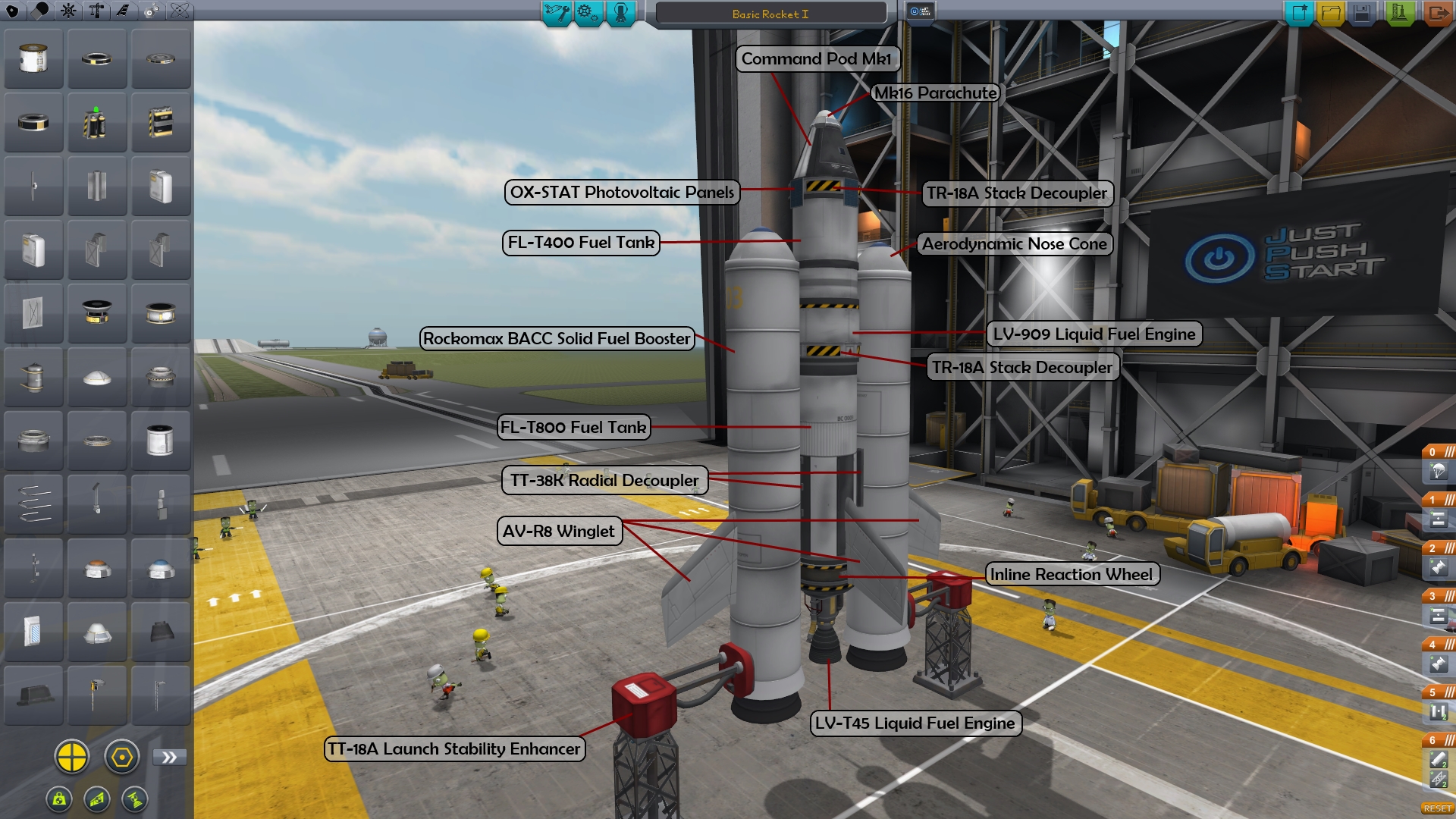
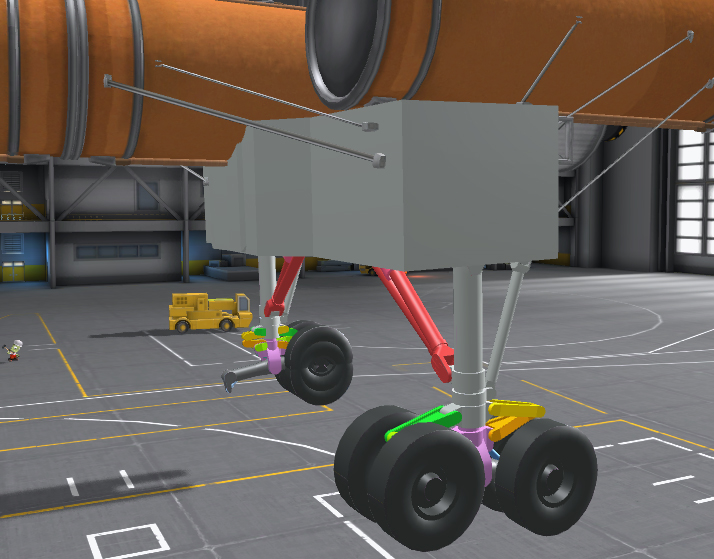
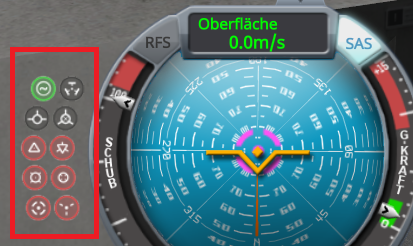
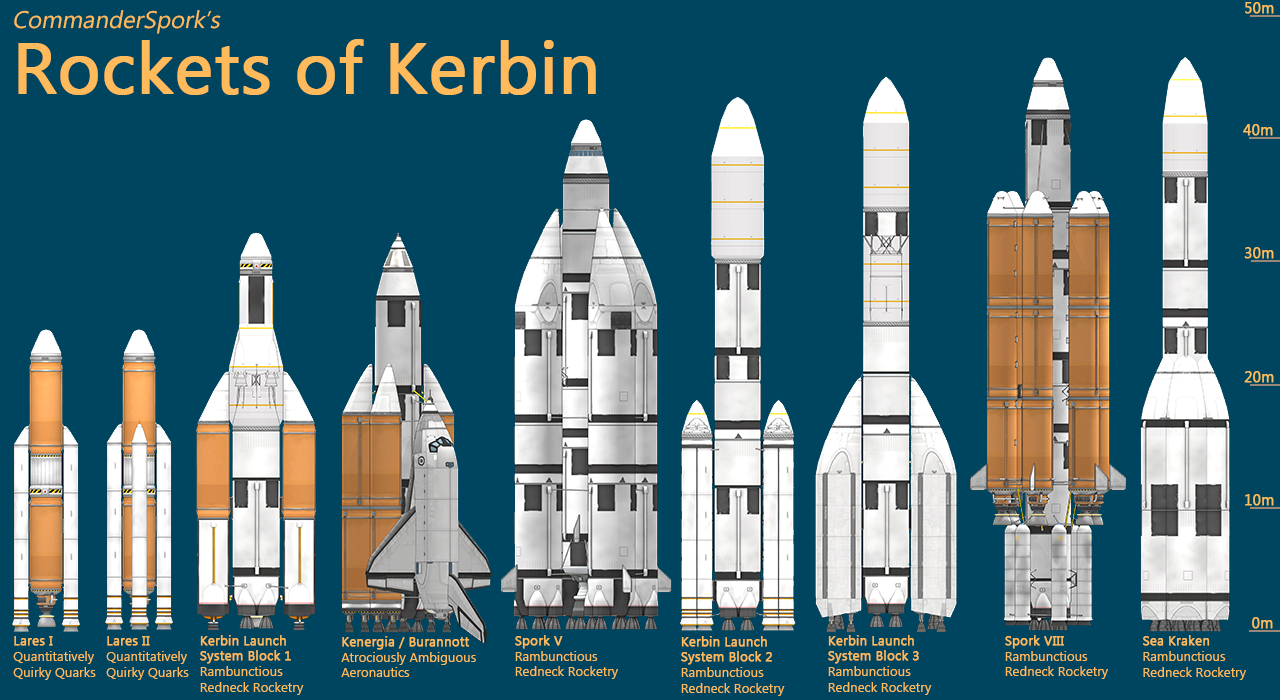
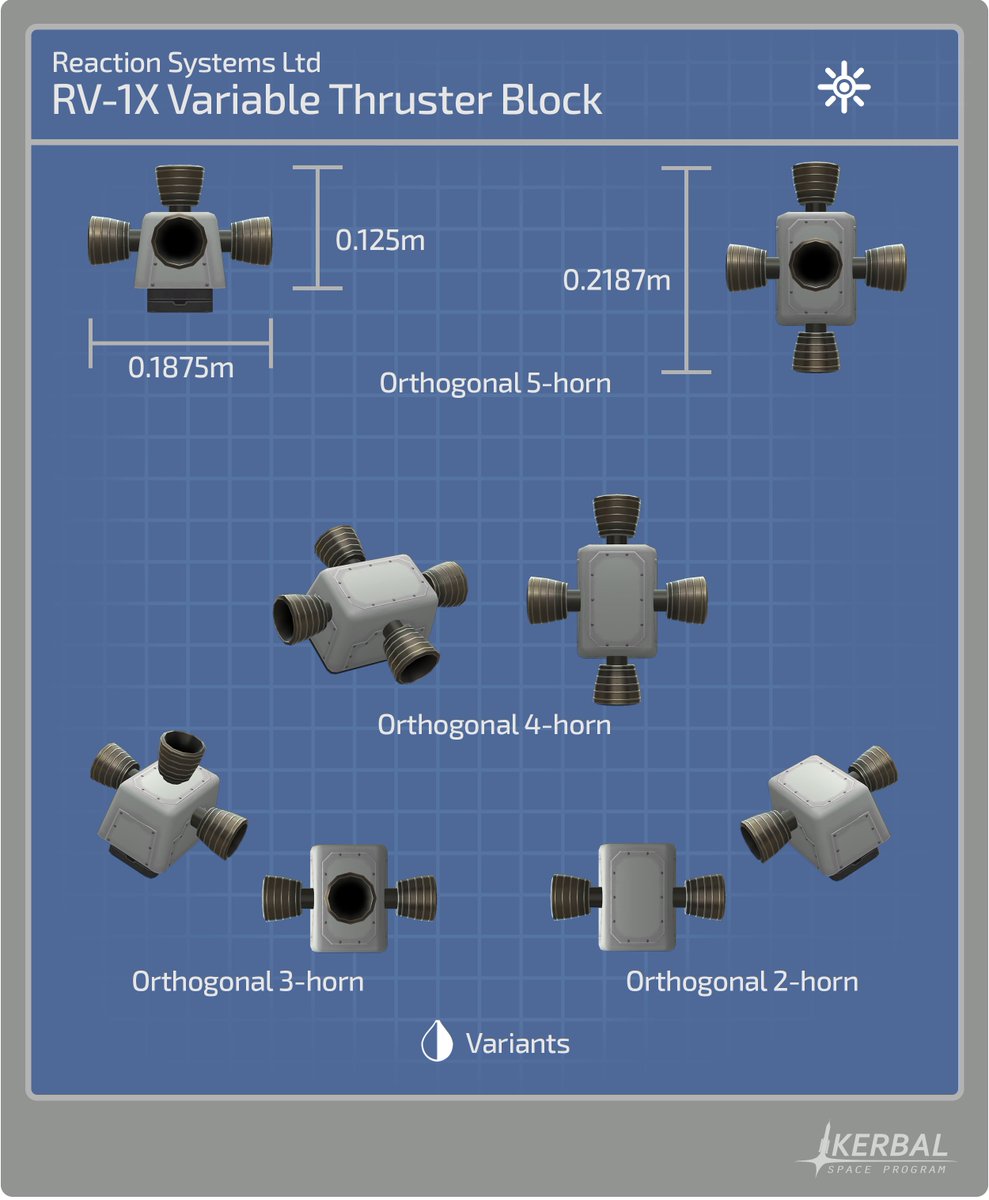
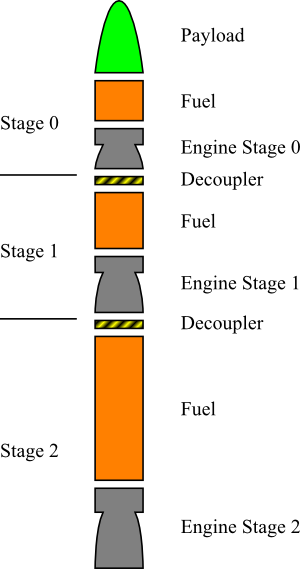
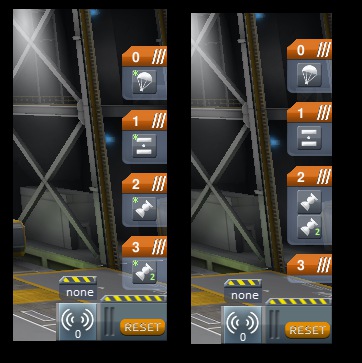
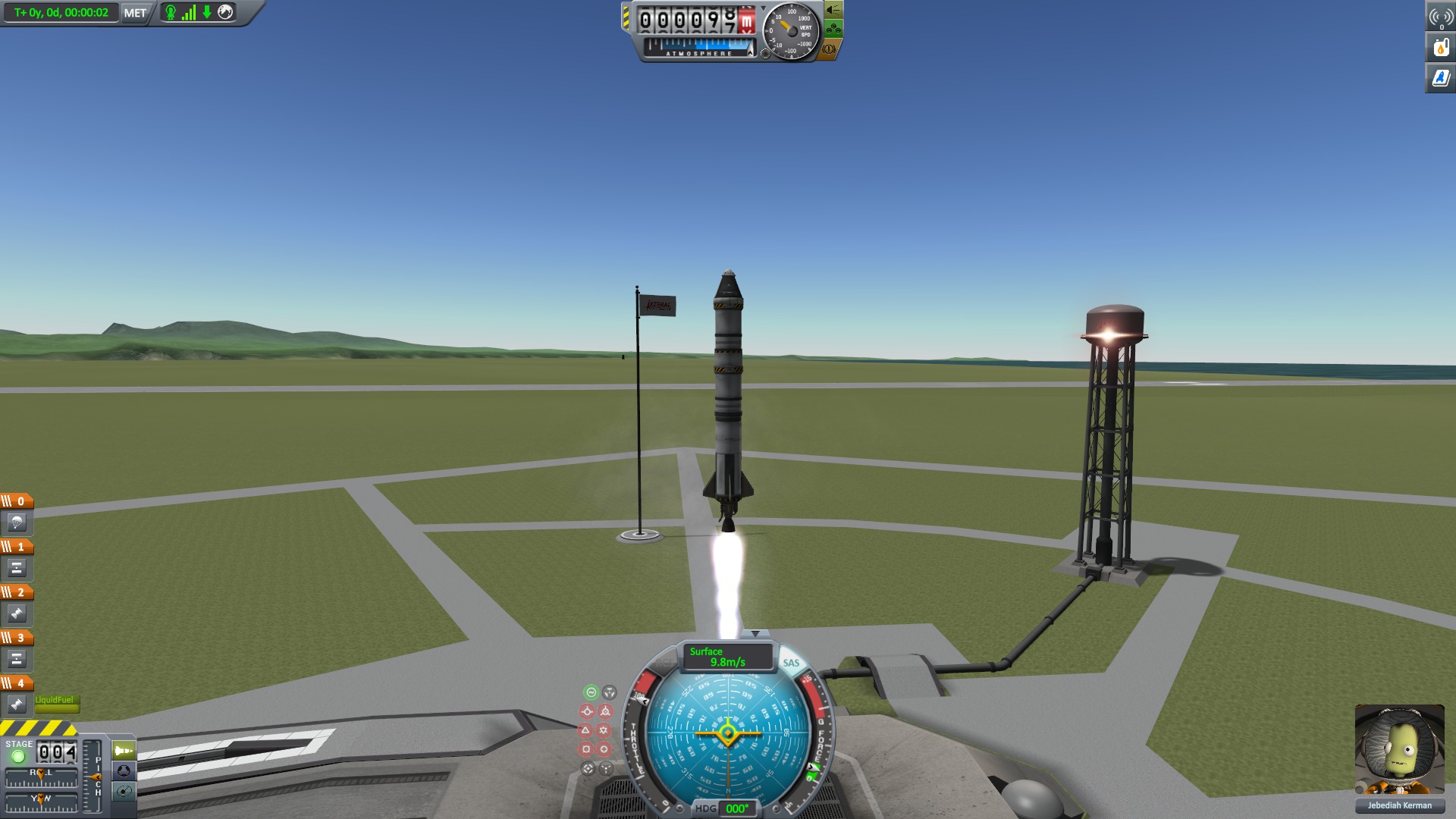
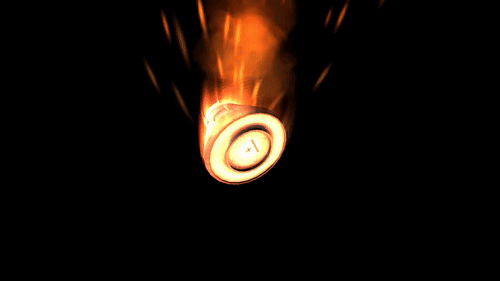
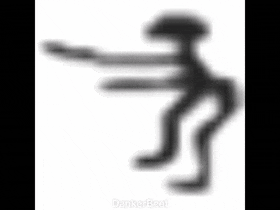
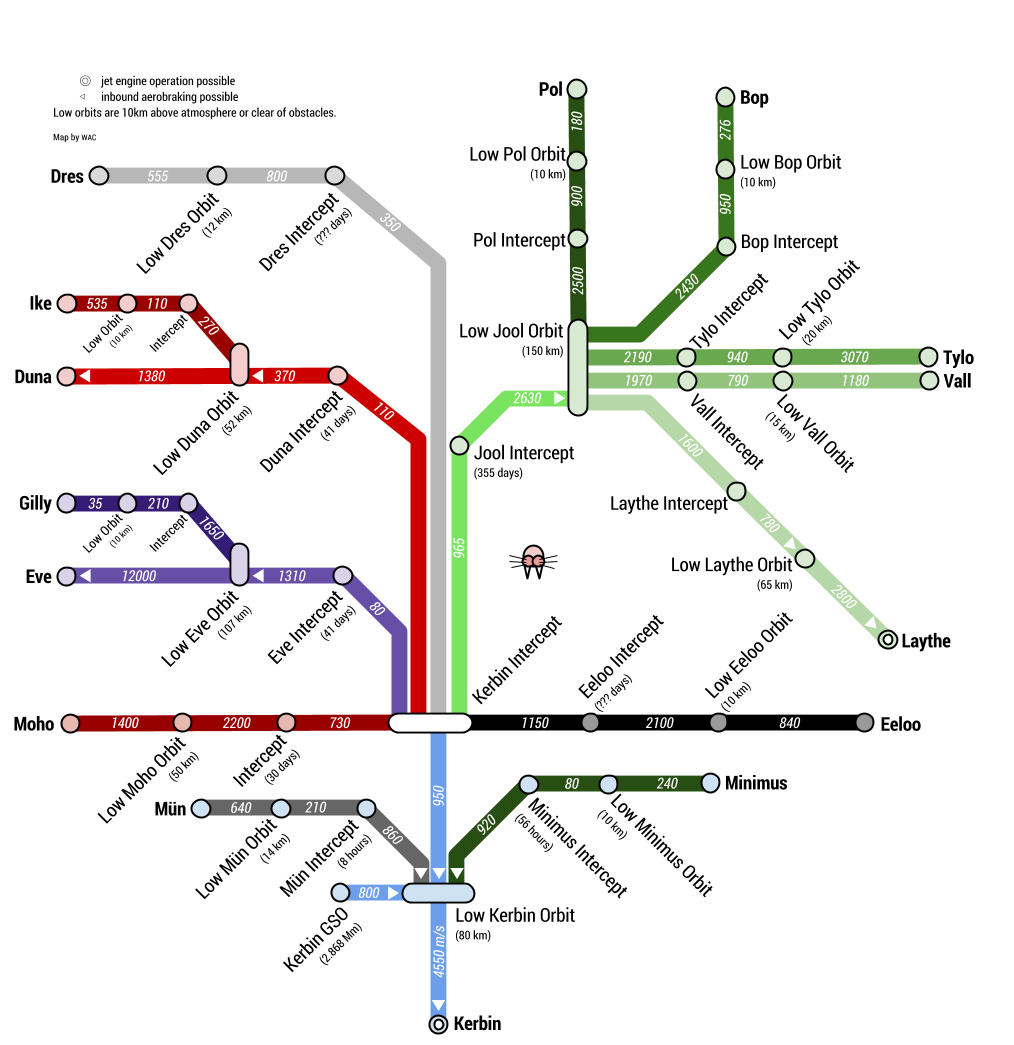
Leave a Reply